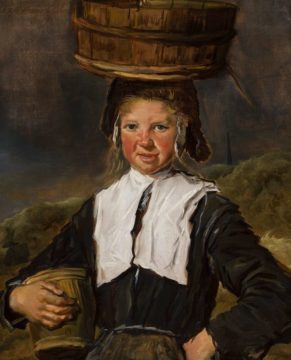Zachary Fine at The New Yorker:
 Hals was not the second- or third-best Dutch painter of the seventeenth century; he was the best of the nineteenth. In the eighteen-sixties, the French art critic Théophile Thoré (who famously rescued Vermeer from oblivion) kicked off a revival of Hals, making him a favorite of art collectors and painters—Gustave Courbet and Édouard Manet, Mary Cassatt and James McNeill Whistler, Robert Henri and George Luks. (Luks reportedly said that the only two great painters in history were Hals and himself.) By 1900, the city of Haarlem had installed a statue of Hals in a public park. Even as he fell behind Rembrandt and Vermeer in the twentieth century, his paintings would retain a sheen of newness. According to the painter Lucian Freud, Hals was “fated always to look modern.”
Hals was not the second- or third-best Dutch painter of the seventeenth century; he was the best of the nineteenth. In the eighteen-sixties, the French art critic Théophile Thoré (who famously rescued Vermeer from oblivion) kicked off a revival of Hals, making him a favorite of art collectors and painters—Gustave Courbet and Édouard Manet, Mary Cassatt and James McNeill Whistler, Robert Henri and George Luks. (Luks reportedly said that the only two great painters in history were Hals and himself.) By 1900, the city of Haarlem had installed a statue of Hals in a public park. Even as he fell behind Rembrandt and Vermeer in the twentieth century, his paintings would retain a sheen of newness. According to the painter Lucian Freud, Hals was “fated always to look modern.”
His genius boils down to a contradiction: loose, unblended smears of paint that create the flesh-and-blood likeness of a human being. The late works of Titian, Velázquez, and Rembrandt would all head in this direction with their “rough” manner, but Hals achieved a kind of scary immediacy that seemed almost foreign to the medium—a photographer suddenly among painters.
more here.
